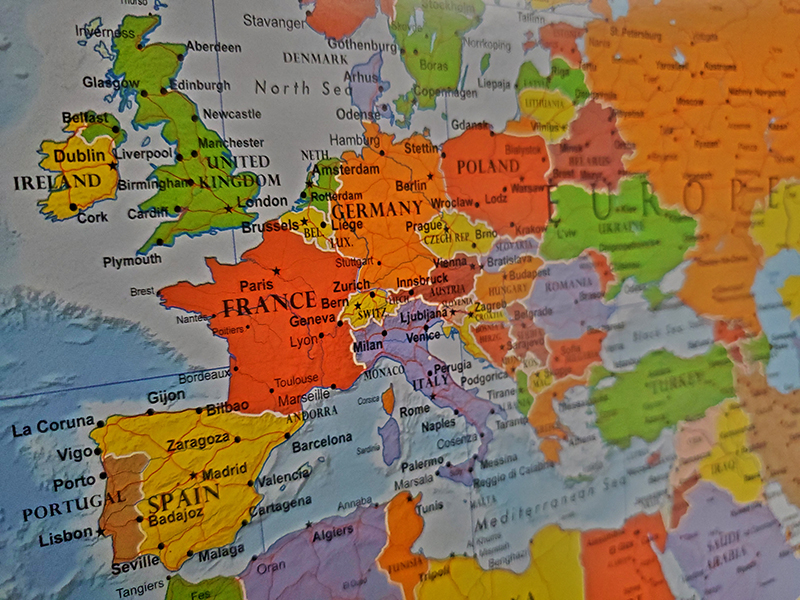
The European Union (EU) will keep its restrictions on non-essential travel from the United States and United Kingdom in place even as it is lifting restrictions for visitors from a wide range of other countries. That means that residents of the two countries may not be let in, depending on the requirements in the member state (there are 27 of them in the EU) in question.
If you think bureaucracy is bad in this country, your local DMV or land records office has nothing on the EU.
They have been working on a program called “Re-Open EU” for almost a year, but they still have a ways to go. You have to wend your way through numerous web pages to determine what restrictions are still in effect in any given member state, and there is a map showing the risk levels across each of the states.
The EU contends that this map employs a color-coded “traffic light system” to denote those risk levels, but fortunately it’s unlike any traffic light I have ever been stuck at.
That system uses “green”, “orange”, “red”, “dark red” (they had to add that one when things got bad) and “grey”, each color corresponding to the region’s Covid notification and positivity rates (avoid dark red northern Sweden, but you would be relatively fine across the border in green central Norway).
The EU may have what it terms “a common approach to travel measures”, but when you get into the rules, it is anything but. The EU’s recommendation is not “legally binding”, according to the Bloomberg report on the travel restrictions, and certain members states “have already eased curbs”.
Americans and Britons can travel to Greece, for example, without restrictions if they can prove that they are fully vaccinated, had a negative Covid test within the past 72 hours, have a “certificate of recovery from COVID-19 in the past 9 months issued by a public authority or a certified laboratory”, or “a certificate of a positive PCR molecular test result, confirming that the holder recovered from the SARS-CoV-2 virus infection” (whatever that test is).
Vaccinated visitors will be able to enter Spain beginning June 7 if they have been vaccinated, but the EU website shows that travelers from the UK are permitted to go there now “without additional restrictions”.
As a caveat, I am not a travel agent, so don’t make any plans just because I said you could go. Better to make your way through the EU’s electronic maze yourself.
But if you aren’t allowed to visit the Eiffel Tower or the Brandenburg Gate, who can?
The EU Council recommends that its member states “gradually lift” travel restrictions beginning on June 3 for residents of Australia, Israel, Japan, New Zealand, Rwanda, Singapore, South Korea, and Thailand, as well as China — the latter “subject to confirmation of reciprocity”, which is pretty standard in the immigration world.
That said, France is currently only allowing arrivals from Australia, Israel, Japan, New Zealand, Singapore, South Korea, and the United Kingdom (no Rwanda, Thailand, or China exceptions on their list) if they comply with health regulations (those over the age of 11 must have a negative test within 72 hours of departure) and quarantine for seven days.
The EU’s lists are updated every two weeks.
Contrast this with the situation going on at our own Southwest border.
Even NBC News had to admit on June 2 that: “In reality, the border is not closed.” The outlet reports that along our southern border this year, 15 percent of single adults and 65 percent of families apprehended by CBP have been released into the U.S. despite expulsion orders for aliens entering illegally issued by the CDC under Title 42 of the U.S. Code in response to the pandemic.
Why have so many illegal entrants been released? According to NBC News, the Mexican government will only take back a certain number each day.
So, even as the EU is slow-walking its reopening to foreign nationals, the United States appears to be pretty open — even if you don’t have a visa. Perhaps Washington could use a little European bureaucracy. With policies like these both here and there, you may not be able to see Paris next spring, either.
